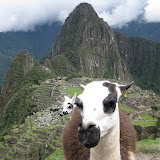.JPG) The story for my travels this week is a little different. I wish I could introduce it with a picture that was a bit more in focus, but my camera is still rebelling at the moment. What it contains deserves a bit more than I can really show.
The story for my travels this week is a little different. I wish I could introduce it with a picture that was a bit more in focus, but my camera is still rebelling at the moment. What it contains deserves a bit more than I can really show.
This is the inside of a house in Belèn , Guatemala
I am not Central American historian, so I can’t make any real guarantees as to accuracy or bias in what I know. But here’s what I have: until 1996, Guatemala
A huge number of these people were indigenous, and already faced a great deal of discrimination. Even after the war ended, there were outbursts of violence against them. Those who lived often lost all of their family as well as any land they could call home.
Fortunately, there has been help. People have recognized the problem and stepped up to the plate to get these people back on their feet. One of the oldest and most successful organizations taking on this mission (among other missions in several other countries) is Agros International.
The motto of Agros is three words: Tierra, Esperanza, Vida—Land, Hope, Life. At its most basic level, Agros is a micro-loan organization that buys land, gives it to indigenous people to start a small village, and helps them set up its basic infrastructure. Once the villagers are able to work off their debt, they buy the land back. Agros then uses that money to buy more land for more people, and the cycle repeats.
One of the basic tenants is that instead of coming in a giving charity to the village, Agros works with the village and sees how it can augment what the village already has, in order to make it more self-sustaining. For example, if there is a big weaving culture as there is among the Ixil, then they will come in to teach more weaving techniques and how to make things that are more likely to sell, as well as setting up channels for marketing opportunities. If there is a strong farming element and a good location, Agros will teach new techniques to improve crop yield and suggest other crops that will also work aside form the ones the village is already trying. If there’s a large amount of wood resources, then possibly there will be some carpenter training so that the village can create and sell goods made from just two trees for the same profit thy would gain by cutting down and selling half of their forest.
I’ve spent the last week working with an Agros team based out of Cotzal , Guatemala village of Belèn , with extra days on each end for a little orientation and exploration in Chichicastenango beforehand and Antigua afterwards. I was joining a crew based out of Epiphany Parish of Seattle, about half of which had been coming down to Belèn for years, and was really starting to get to know the villagers.
That phrase doesn’t quite cover it though. "Getting to know" someone sounds like people making small talk over a water cooler at an office. This went deeper than that. At the end of the last day, more than half the village literally lined up to shake our hands and give every team member a hug. A couple of them even started crying. Teams of laughing kids would not let us go as we said our goodbyes, including new members of the team like me.
I’m not sure I could really do justice to how we got there from never having met any of them before, when some of the more shy residents would not meet us or talk to us. It’s not just because I wasn’t there for the first few years. It’s because I’m not sure I know how to put any of it into words. There are bits and pieces I could describe, like my leading a class of little kids, some of which only spoke Ixil and a little Spanish, how to make and inflate origami cubes as part of a cultural exchange. Or how we cooked more than 25 pizzas in the village’s wood-fire oven and served it to them before they gave us a taste of their version of tamales. Or there was sitting down with the village’s only schoolteacher and asking what he needed for his classroom of 40 or more kids ranging from 1st to 6th grade.
One the morning of the last day, some of us went on a hike up the mountain with the mayor of the village hacking us a trail with his machete so he could show us his favorite view spot of the village. We were able to look down on the valley and see something he could be proud of. Thanks to his friends and a little help from Agros, they had gone from having just about nothing to nearly half of them well on their way to paying off their own land.
And let me tell you, it’s some beautiful land.
--
Check out this entry's Photos.








 Questions? Comments?
Questions? Comments?
A beautifully written description of an incredible week. What a special land and people.
ReplyDeleteThank you! By the way those who haven't yet should also check out Shannon's take on the trip, here.
ReplyDelete